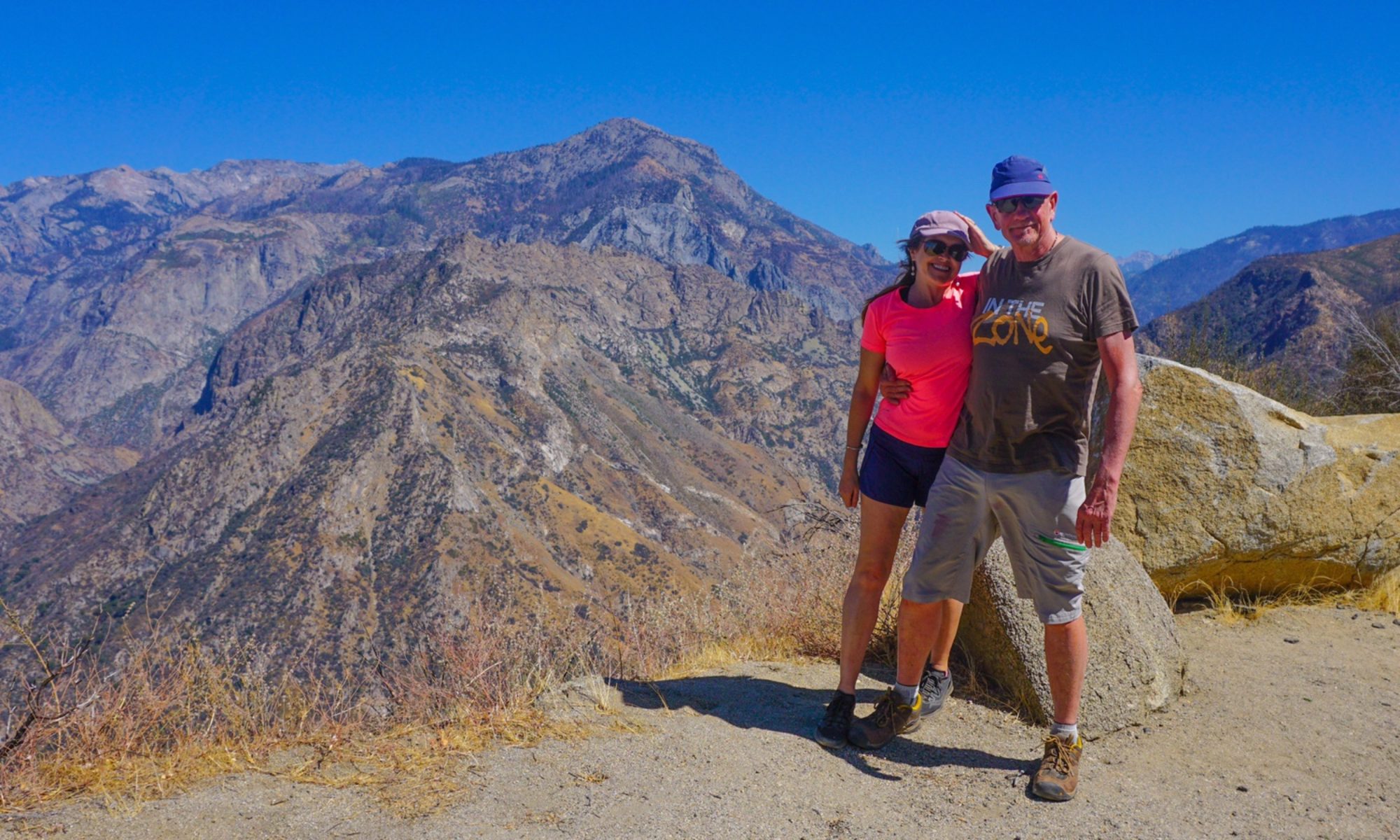Author: Mrs A
Location: Hastings, East Sussex, UK
Tuesday: We arrived in Hastings mid morning and Mark was off into town right away on his bike for an eye pressure test…the first since before we headed to Europe in May. Thankfully the results were great – his eyes stable and healthy – such a relief. Meanwhile, I got busy tackling the washing mountain, pleased to be able to hang it out in warm sunshine and a gentle breeze.
After a light lunch with mum, Mark and I jumped on the bikes and rode into town, taking a flask of herbal tea with us. We called into Waterfalls, a local tea room and gift shop with a fabulous home cooked menu to pick up cakes (they always have a dairy and gluten free options available along with their ‘normal’ ones) and continued our ride.
My sister and I used to always take our bikes out along Hastings seafront, loving the exhilaration of riding in the fresh salty air, the promenade offering a safe haven from the cars. These days it is a designated cycle-pedestrian shared path, so we don’t have to feel guilty for riding along. We headed to Hastings’ Old Town. This area of Hastings was mostly built prior to the 1760s (before bathing in the sea and drinking sea water(!) was made popular for health reasons).

Hastings has been home to fishermen (fisherpeople?) for more than a thousand years. These days there are 25 fishing boats at The Stade, making it the largest land-based fleet in the UK…needless to say the seafood in Hastings is deliciously fresh, and there’s a wide variety to choose from.

We rode to the extent of the seafront, an area called Rock-a-Nore. Here we could see right along the coast looking towards Dungeness in the distance, albeit with a chilly autumn breeze off the sea. There we enjoyed our tea and cake before heading deeper into the Old Town. Hastings Old Town is split almost in two, with All Saints Street (being headed by All Saints Church) being traditionally the home of the poorer residents, the fishermen’s cottages and workers in the fishing industry, and the St Clement’s Church area being the better off, wealthy area of Old Hastings. These days both have their charm, with the older housing on All Saints Street being in different states of repair, and many houses dating back to the early 1500s.



Like many of the French towns and villages we have visited, Hastings Old Town used to have a wall as defence against attack from the French. It fell into disrepair and was pretty much all gone by the 1800s. There are still several pubs in the old town, many of which have interesting historical takes linked with them. One of the pubs on All Saints Street (The Stag Inn) has a tunnel linking its cellars to a cave in the cliffs, where smuggled spirits were brought in from France (or pirated from ships attacked in the English Channel).

A brief ride down George Street, still decked out in rainbow flags from the fourth Hastings Pride (25 August) and we headed back home for the evening.
Wednesday morning looked very wintry in comparison to Tuesday, with heavy grey skies and drizzle. It would have been easy to stay indoors and do not much but instead mum, Mark and I headed back to the Old Town by car for more of an explore on foot. It was very cold and windy there so we didn’t linger on the seafront, instead ducking off down High Street, long been the hub of the town (originally known as Market Street). Today it is still full of little interesting shops, old antiques alongside gift stores and delis.
I follow the Hastings Old Town Appreciation Group on Facebook and a few weeks ago I had seen my friend Emma mentioning a 1066 Hastings Gin sold in Penbuckles Delicatessen where she works part time. We decided to call in. What a great deli! This is the type of location we dream of finding, packed full of produce from local farms and businesses, ranging from cheeses, wines, milk, jams, pickles, sauces, cakes and savouries. They have a real focus on the environment, minimising waste and utilising biodegradable products where possible.


It was a cappuccino for mum, a 70% dairy free hot chocolate for me and a white hot chocolate for Mr A, accompanied by a vegan pastry roll and a St Leonards Pasty. All delicious. And we mustn’t forget the gin tasting – we tried samples of the 1066 Hastings Gin and also the award winning Haswell Gin. Both very tasty with and without tonic. We bought a bottle as a gift for friends…hopefully they’ll let us taste a drop!

We bought some cockles (boiled molluscs in vinegar) from the fish market on our way back to the car and headed home for the afternoon.

Mr A waved goodbye and headed off for the first time driving Truffy without his co-pilot. He’s off to catch up with some old friends from Australia who have moved back to the UK, before heading off on biking adventures with some more friends this coming weekend…I’m sure he’ll be back soon to share more about that!
























































































































































